Invasive plants – 10 species to watch for, and how to stop them spreading
Find out how to identify invasive plants in your zone, and get rid of them for good
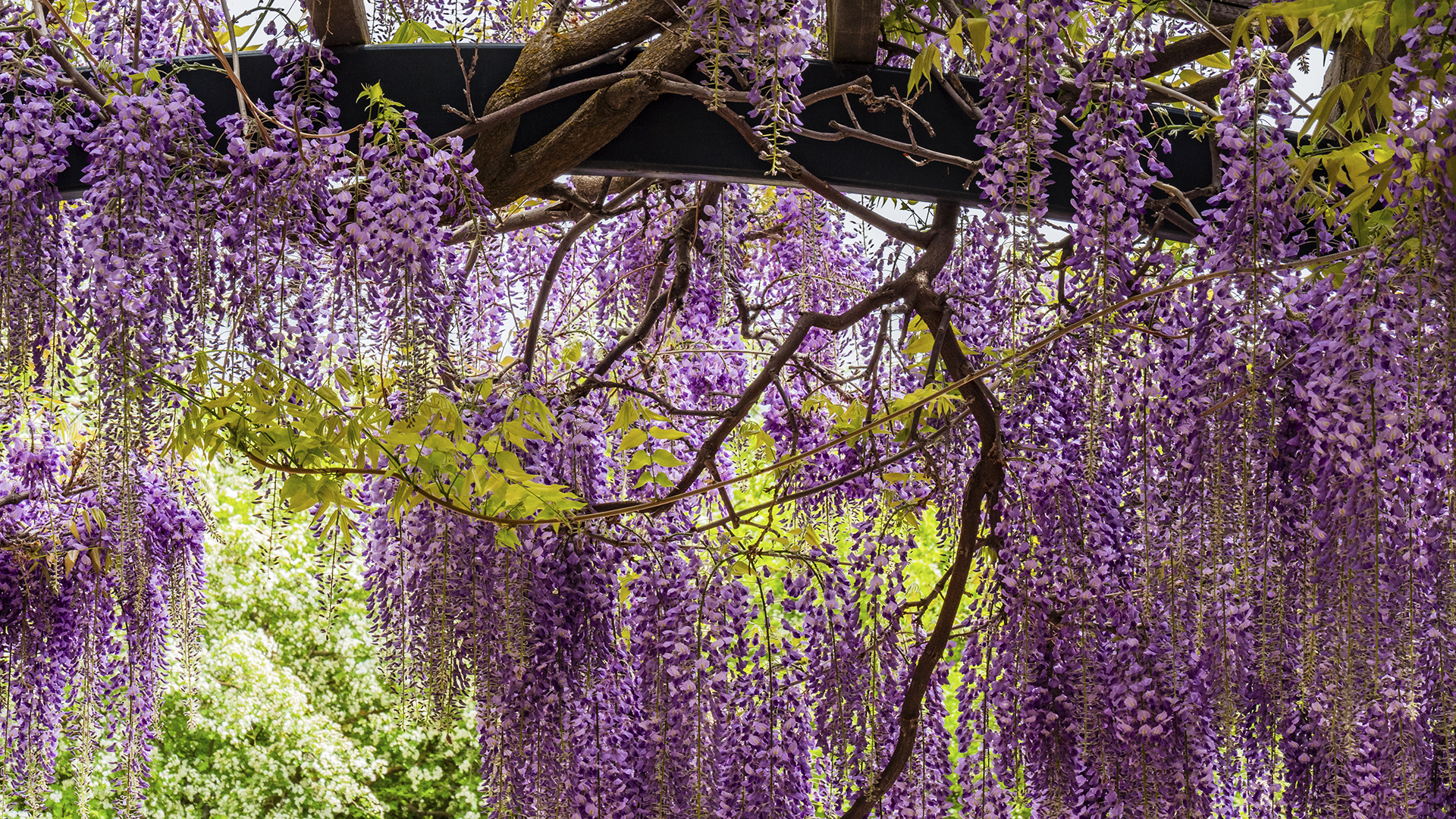

Invasive plants are those that quickly take over your backyard, dominating your carefully selected and nurtured treasures and generally destroying the local biodiversity of plants and wildlife.
There are numerous and some very well-known horticultural offenders, and knowing how each plant spreads and whether it conquers its new ground by dispersing seed on the wind or through an extensive root system can prove a real game changer. If not enabling you to eradicate the plant completely, getting savvy will at least make controlling it much easier.
These are the top 10 invasive plants to look out for in your flower beds and borders –and the actions to take.
10 invasive plants worth knowing about
Growing conditions play a huge role in turning perfectly well behaved ornamental plants into backyard thugs. Get to know which plant types are prevalent in your area by consulting your local Cooperative Extension Service or a local nursery.
1. Japanese knotweed (Fallopia japonica)
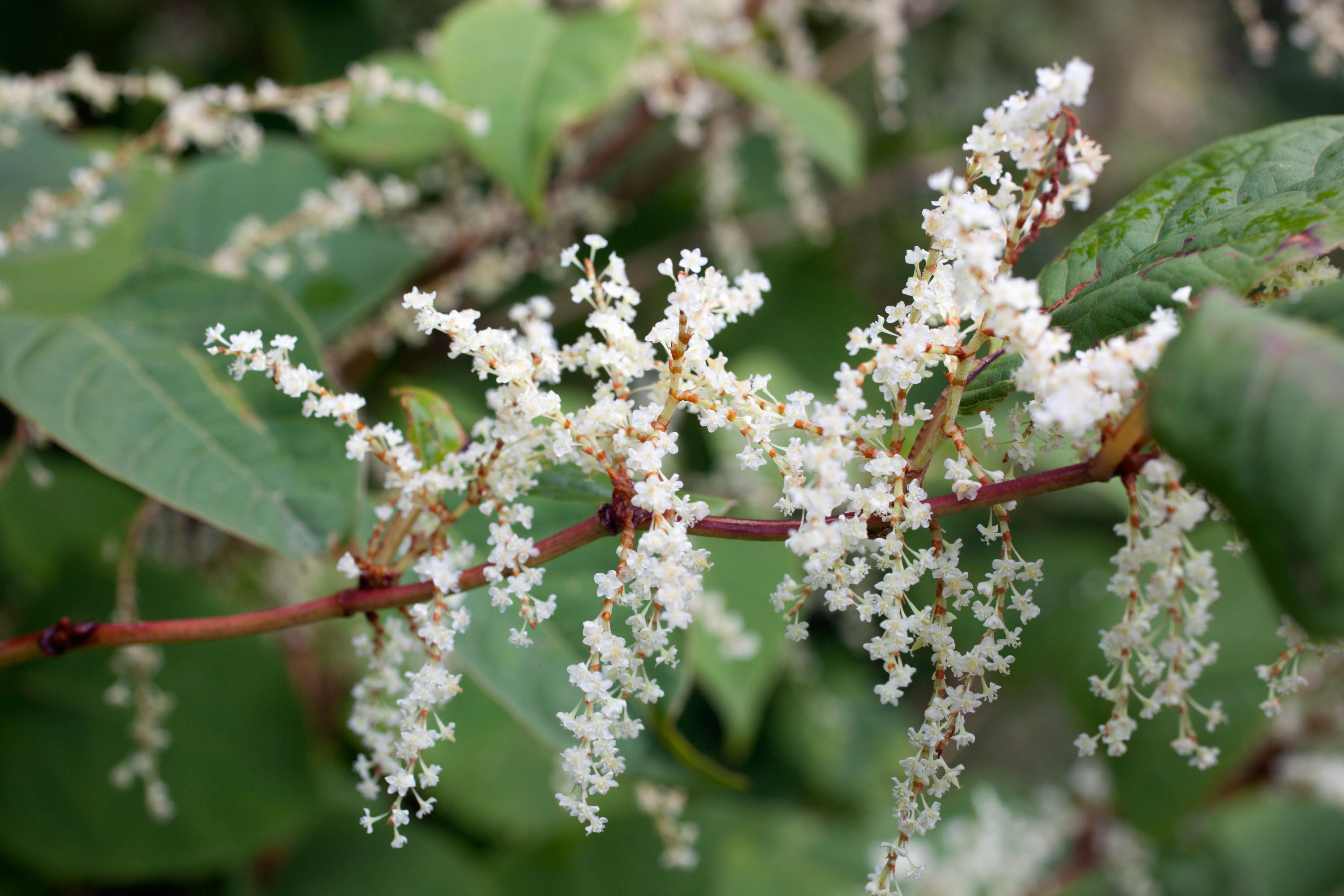
A true yard heavy, although originally introduced as an ornamental plant, Japanese knotweed runs riot smothering everything in its path. Spreading and claiming new land through its network of aggressive creeping roots, it has a habit of working its way along rivers, watercourses and waste ground. Roots are strong and persistent enough to break through asphalt, underground pipes and drains, so don’t let it anywhere near your newly constructed patio or front porch.
Growing up to 4in (10cm) a day, the stems are clearly noticeable in summer thanks to their attractive white plumes.
Take control by digging out every shoot, however small, by hand or digger. Notoriously difficult to control you may need to call in a specialist and it can take up to four years to conquer a large patch.
2. Chinese wisteria (Wisteria sinensis)

It’s hard to believe there can be any problems caused by growing wisteria. With its cascades of mauve and lilac blooms in early summer, it is a vision of pure elegance. But genteel garden favorite Wisteria sinensis is extremely vigorous. Twining and rapidly climbing, it will send out tendrils which quickly mature into thick vines, reaching up to 60ft (18m) long. Snaking its way through both deciduous and evergreen trees and shrubs, including mature native varieties, it can strangle branches and smother foliage, generally weakening the plant and making it more prone to storm damage.
Keep this sprawling beauty under control by snipping off fresh shoots hard. If more severe action is needed – which is extremely likely south of USDA hardiness zone 4 –saw through the stems at ground level and apply weed killer straight away.
Be aware of its toxic nature, too. The RHS shares this advice, ‘All parts of Wisteria sinensis may cause severe discomfort if ingested. Wear gloves and wash hands after handling.’
A plethora of blooms, leads to a bumper crop of wisteria seed pods, and these are toxic to many animals including dogs and cats. Keep a close eye on the plant and remove pods where possible before they fall, or fence the area off and keep animals away. The Dogs Trust advises,’ If you think your dog has eaten a toxic plant or substance, contact your veterinarian straight away, as symptoms may not always be immediately obvious. Symptoms may include vomiting, diarrhea and skin irritations, depending on the plant or substance and how much your dog has eaten.’
3. English Ivy (Hedera helix)
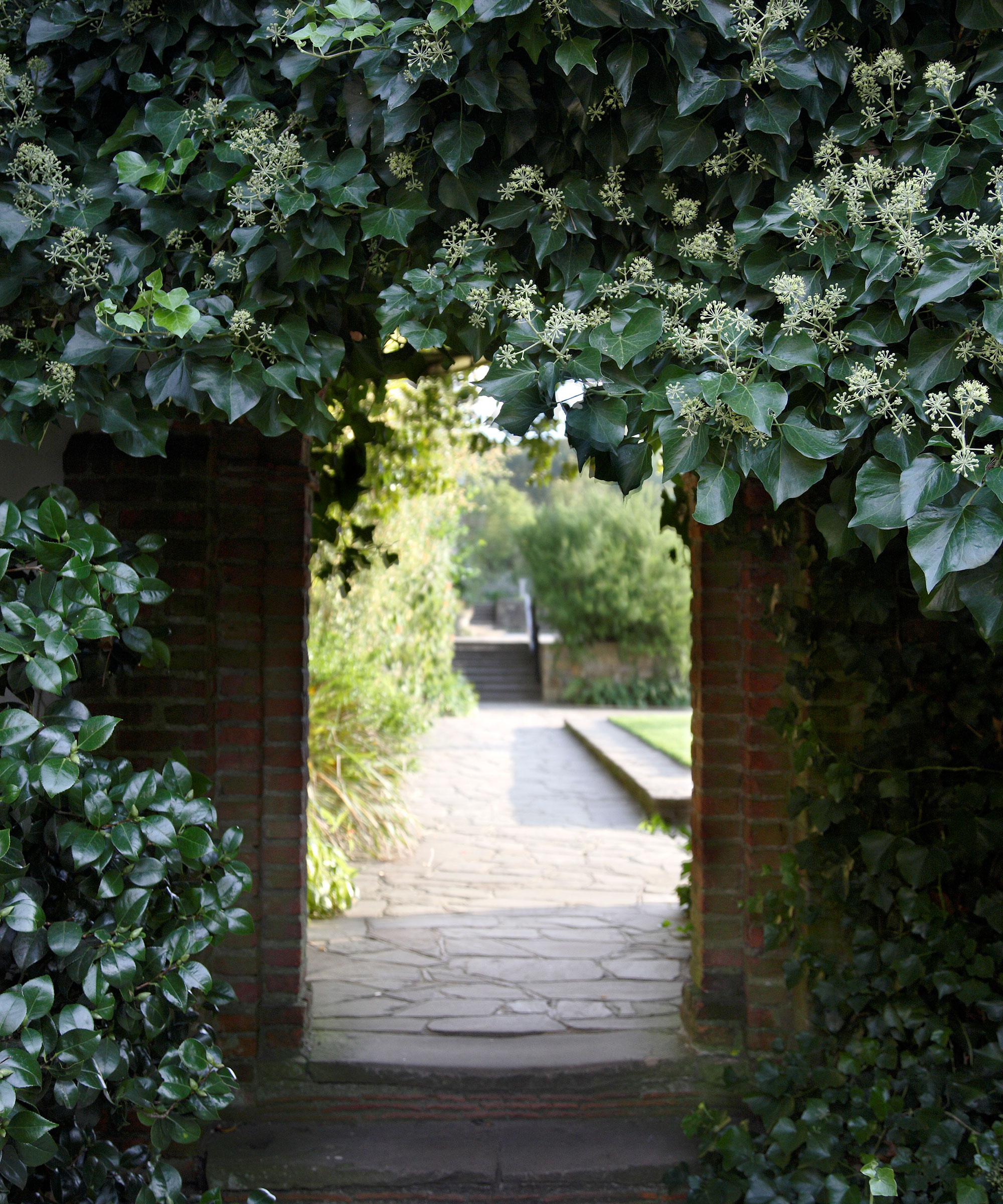
Prolific ground cover and much admired for its decoratively shaped and patterned foliage, English ivy is one of the best trailing plants for hanging baskets as well as one of the best evergreen climbers. Adding all year interest to seasonal bedding it is readily available and hugely popular – thanks also to its easy-going nature. But be warned this trailing evergreen is seriously invasive, especially in the Pacific northwest.
It spreads through a network of persistent, self-rooting stems and its plentiful seeds, which are irresistible to many birds. Crowd surfing over borders, lawns and encircling trees, working its way up to the crown, in search of light it can prove a real problem.
The RHS recommend these ways of controlling ivy:
If it’s on trees, where possible, cut the stems back to the ground and dig the woody stump out. Regularly cutting ivy stems back to ground level will weaken but is unlikely to kill the plant.
If it’s unwanted ground cover, weed killer sprays can be used on Ivy, but their very glossy leaves do form a natural repellent. Try bruising the leaves by trampling and with the back of rake before spraying to increase chemical uptake.
4. Butterfly bush (Buddleja spp)
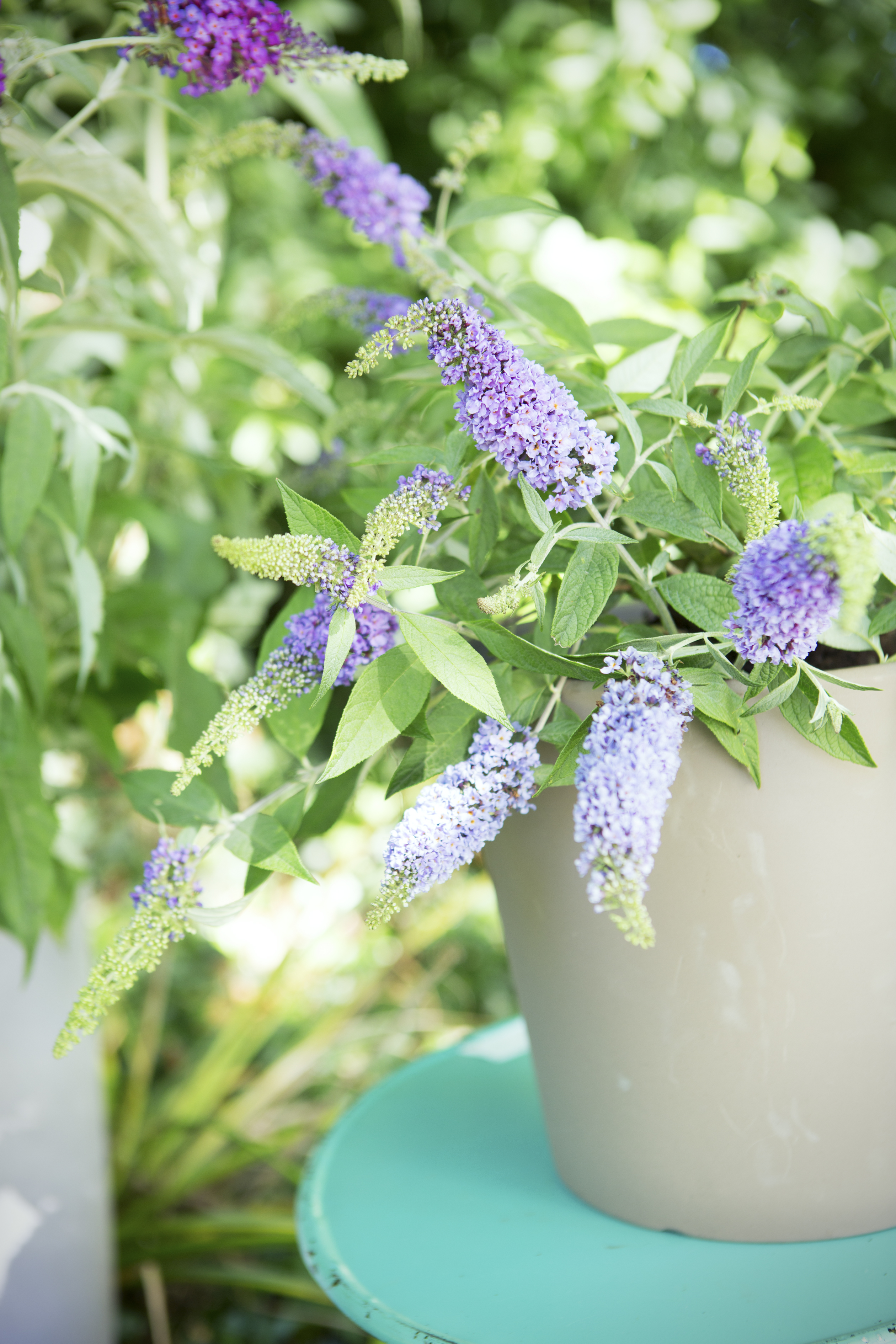
Originally planted for its mass of purple and white flower spikes made up of tiny, fragrant flowers, deciduous shrub buddleia, or butterfly bush, is often chosen by gardeners to feed and encourage butterflies and hummingbirds. However, it is among the worst invasive hedge plants in the Pacific northwest as well as in parts of California, and along the eastern seaboard.
Easily spread by seed, buddleia is quick to establish in sunny, well drained sites. Overtaking and crowding out many native flowers and shrubs, it dominates wasteland such as abandoned railroads and mines and reverts back to its primary pale mauve flowers.
The most reliable way to control butterfly bush is to dig each plant out or cut back hard and treat with weed killer in spring. Outside the areas where it is invasive, knowing how to prune buddleia will keep it looking its best.
5. Japanese honeysuckle (Lonicera japonica)

Thriving in USDA zones 4 to 6, this vigorous twining climber Japanese honeysuckle (Lonicera japonica) spreads across the ground, winding its way into shrubs and trees, smothering pretty much everything in its path. Happy in sun or shade it can be found along the east coast from Maine to Florida, across to Wisconsin and Texas.
Covered in white fragrant, tiny trumpet shaped flowers from late spring to fall, it does have a seductive charm, certainly for butterflies and hummingbirds who feed from its nectar. But don’t be fooled, it can rapidly grow to 15 to 30ft (4.6 to 9.1m) long thanks to its plethora of seeds and self-rooting stems.
Need to take charge of this rampant climber? Repeatedly cutting back followed by a dose of weed killer should keep it in check. Alternatively, you could put it in a shady but dry spot, which will slow its growth, or grow honeysuckle of other varieties.
6. Japanese barberry (Berberis thunbergia)

A popular choice for many backyards, thorny deciduous shrub Japanese barberry (Berberis thunbergia) often wins hearts thanks to its spectacular fall foliage display and masses of orange-red berries. Quick to cast seed, largely helped by birds feasting on the fruit, it rapidly colonizes deciduous forest floors in the north and east, stamping out many native varieties.
Hardy in USDA zones 4 to 8 it is toxic to animals but its plentiful razor sharp thorns are a serious deterrent. Mature plants will grow to a height and spread of 5ft (1.5m) and many gardeners favour growing this shrub as a dense hedge that can be neatly clipped.
Although new less fertile varieties are gradually being bred and introduced, the easiest way to control existing barberry plants is to dig out entirely – roots and all – or cut back hard and treat with weed killer straight away. It is well worth being aware, though, that some states, particularly in the Midwest, have placed it on the list of dangerously invasive plants strongly suggesting that it shouldn’t be planted at all.
7. Kudzu vine
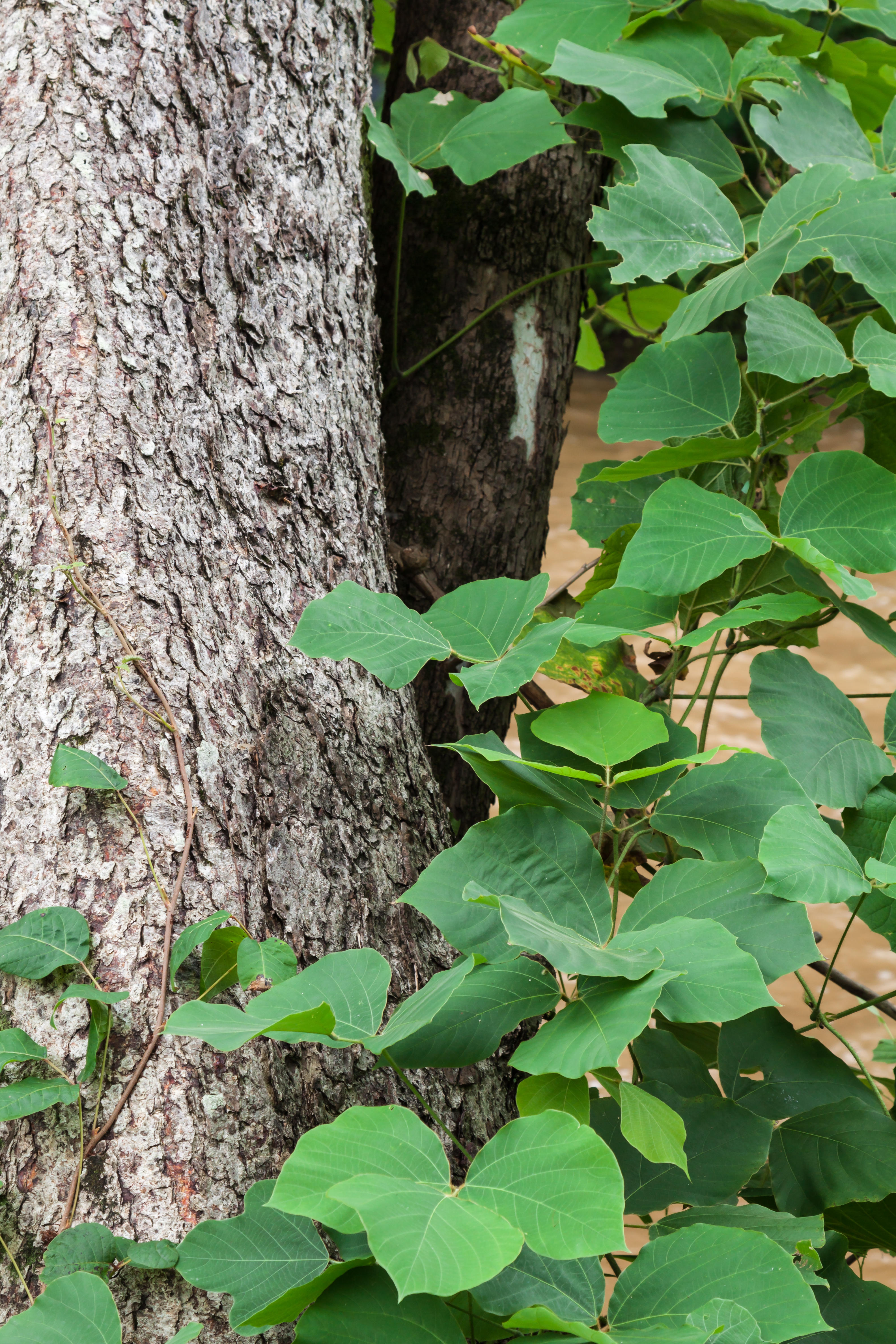
Frequently referred to as ‘the vine that ate the South’, Kudzu is an extremely vigorous, perennial vine that smothers native plants and is capable of breaking mature tree branches with its weight. Originally planted to shade sun-drenched porches on southern plantations, it quickly broke out into surrounding areas and is now commonly found in the south, southeast and up the eastern coast.
Hardy in USDA zones 4 to 9, it produces spikes of purple flowers and grows just about everywhere, loving both sun and shade.
Spreading by just about every means it can – both seeds, spreading roots and rooting stems – it’s a formidable force and needs to be controlled by repeated mowing and spraying with herbicide.
8. Chinese or Japanese silver grass
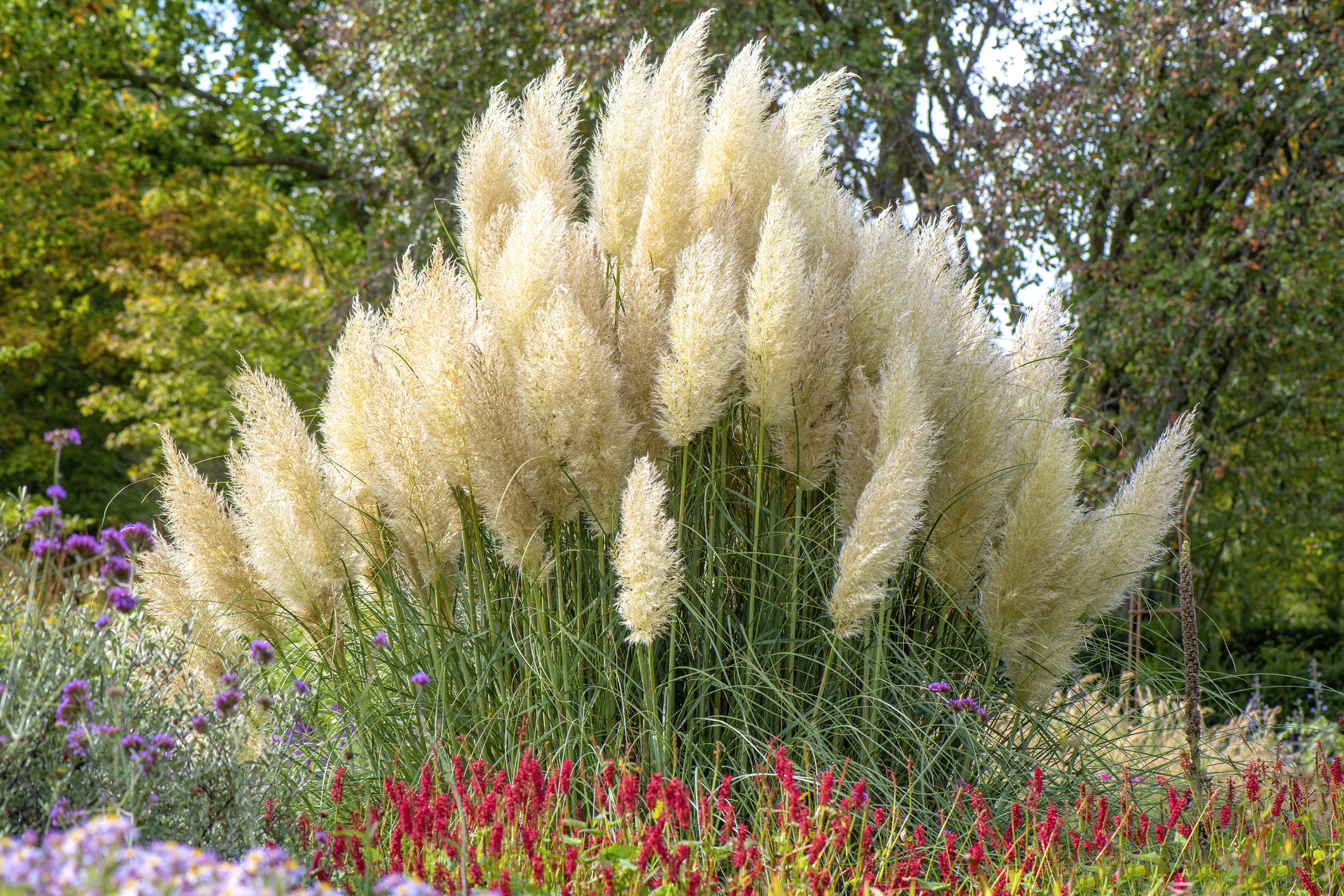
Once a landscaper’s dream thanks to its graceful habit and sheer size, Chinese silver grass has proved to be an extremely invasive plant that loves to spread via its freely self-seeding nature and a network of vigorous roots and rhizomes. Creating huge, dense clumps that grows up to 12ft (3.7m) high, it loves to colonize disturbed ground throughout the US including old fields, forest edges and along roadsides.
Flowering in late summer, the tassel-like blooms are beautifully tinged with silver, pink and rust and certainly look stunning but this oft-called pampas grass is extremely flammable and radically increases the risk of wildfires.
Depending on the size of the clump or area you have to deal with, there are few different clearing methods to try. Digging out the plants mechanically or by hand is pretty reliable but labor intensive. Repeatedly mowing the foliage, especially through the growing season from March to September can also work, weakening the plant’s root system but it can take a couple of years for a result. Introducing grazing cattle is another sure-fire way to manage this plant but is definitely not a viable option for everyone.
9. Winter creeper (Euonymus fortunei)

The Invasive Plant Atlas lists the winter creeper as ‘a vigorous vine that invades forest openings. It grows across the ground, displacing herbaceous plants and seedlings and climbs trees high into the tree canopy by clinging to the bark.’ Native to Japan, China and Korea it was originally introduced into gardens mainly due to its glossy dark green leaves and vibrant pink-red fruits that split open to reveal seeds with a vivid orange covering. Today, though, it can be found growing wild in most of the eastern half of the US and scaling trees up to 20ft (7m) high.
Thanks to its vigorous root system, which can tolerate poor to acid soils in full sun to deep shade, it’s a tricky number to keep in check. Suppressing native low growing plants and starving native shrubs of light, pulling or digging out every bit of the plant is the safest way to rid your yard of it.
Another option is to use a trimmer and cover with a layer of cardboard and mulch. It will take a couple of years to kill off the vine, but patience will be rewarded.
10. Running bamboos (Phyllostachys aurea)
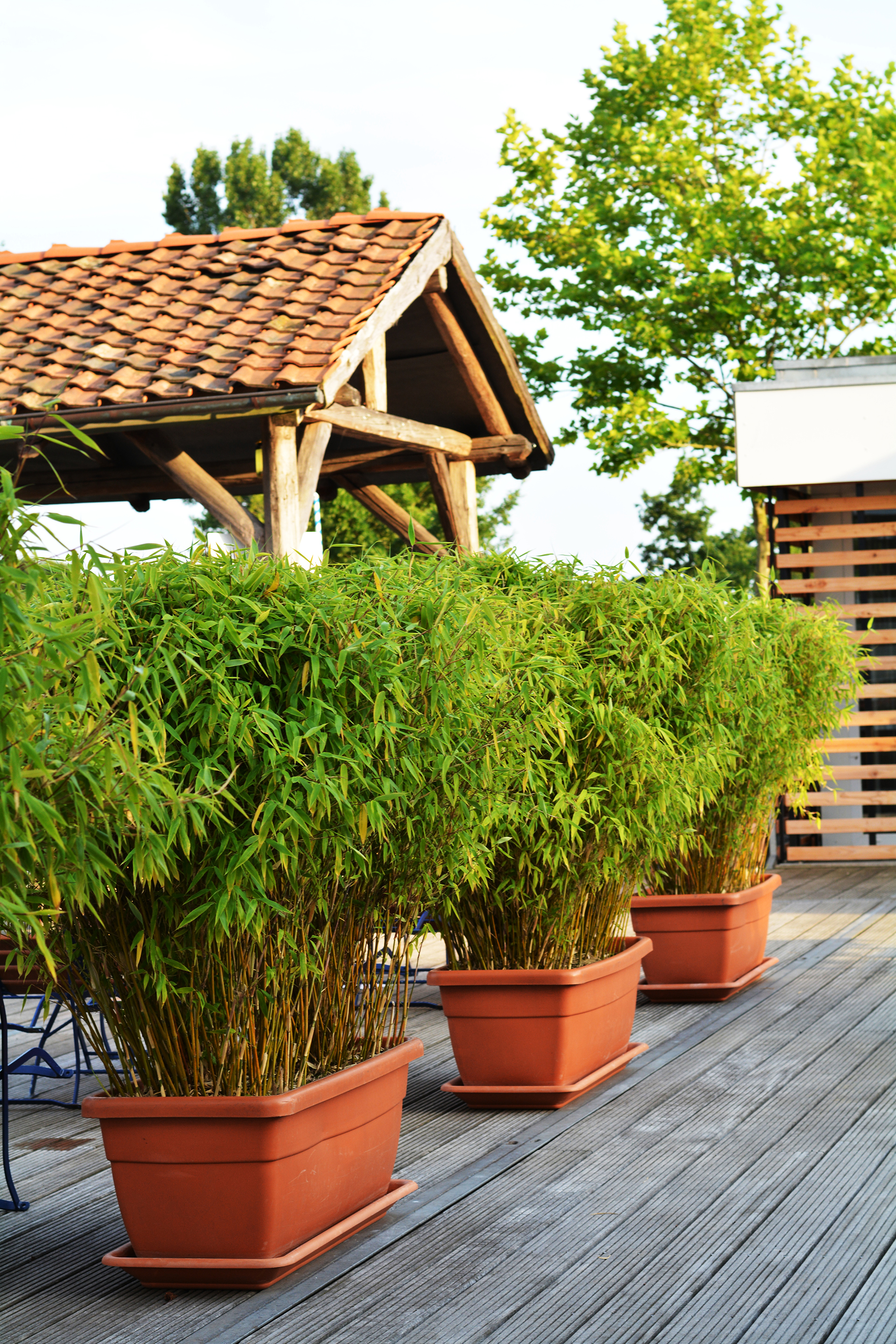
There are two types of bamboo: clump-forming, which rarely gets out of hand and running bamboo varieties that, when given any excuse, will send out unstoppable shoots and rapidly take over. A non-native, ornamental plant that was introduced for its majestic stature and exotic looks, some varieties – such as the yellow and golden bamboo – are considered an invasive plant in many states. While they are still sold in plant nurseries, these plants can prove very tricky to contain and can spread to neighboring areas causing extensive damage.
A ’running’ type of bamboo spreads via a network of underground rhizomes. Extremely tough and fast growing, they send out shoots, often well away from the main plant, that are strong enough to break through concrete and asphalt. Growing mainly from March to May these new shoots rapidly become sturdy canes often reaching up to 30ft (9.1m) or more.
Cutting off shoots as they appear will temporarily halt growth, but the safest management technique to stop bamboo spreading is to remove the plant completely. The team at the RHS says, ‘Non chemical methods involve digging out clumps of bamboo and restricting the size. This can be difficult with very large plants, or on heavy soil. Use a sharp spade to dig up the entire clump or to remove sections from the edge of the clump that have grown beyond the limits. Sever the rhizomes as you go, lifting and removing them with a fork or trowel. The fringes of larger clumps can be rotovated.’
Containing the spread of rhizomes is another option. This involves sinking a barrier around the plant which will force any shoots up and out of the ground where they can then be cut off. Specialist plant nurseries sell suitable products and can advise on installation.
Why do invasive plant listings vary so much?
Whether a plant is considered invasive or not really depends on the local growing conditions. For example, mimosa is classified as an invasive species in many regions of the US, whilst it is not classified as invasive in the UK.
For the most relevant information stay local and consult regional advice.
How do you safely dispose of invasive plants?
Whether you dig out, cut back or mow down invasive plants in your yard, you still have to dispose of the vegetation. This needs to be handled responsibly in a way that prevents seeds from scattering or roots from re-establishing themselves.
Composting this yard waste is not an option, as it will simply relocate rather than solve the issue. Burning invasive plant matter is also tricky as some will produce toxic smoke which is environmentally dangerous. Instead, consult your local municipality for their guidelines on yard waste disposal.
Sign up to the Homes & Gardens newsletter
Design expertise in your inbox – from inspiring decorating ideas and beautiful celebrity homes to practical gardening advice and shopping round-ups.

Journalist Jill Morgan has spent over 20 years writing and editing gardening, interior and property features. Titles she has worked on include The English Home, House Beautiful, Ideal Home, Houzz and Modern Gardens and she writes regularly for H&G as a Contributing Editor. Whilst she is a dab hand at renovation projects and DIY, she is happiest when out digging in the garden or planning a new border.
-
 9 things you can clean with glycerin – this cheap and natural cleaner is perfect for indoor and outdoor use
9 things you can clean with glycerin – this cheap and natural cleaner is perfect for indoor and outdoor useFrom patio furniture to silverware, this hydrating and gentle cleaning agent will work miracles
By Ciéra Cree Published
-
 Martha Stewart's houses – inside her most iconic properties, from Cantitoe Corners to Turkey Hill
Martha Stewart's houses – inside her most iconic properties, from Cantitoe Corners to Turkey HillThe lifestyle guru built her legacy around her homes, some of which are the most recognized homes in modern American history – we explore her portfolio
By Megan Slack Published